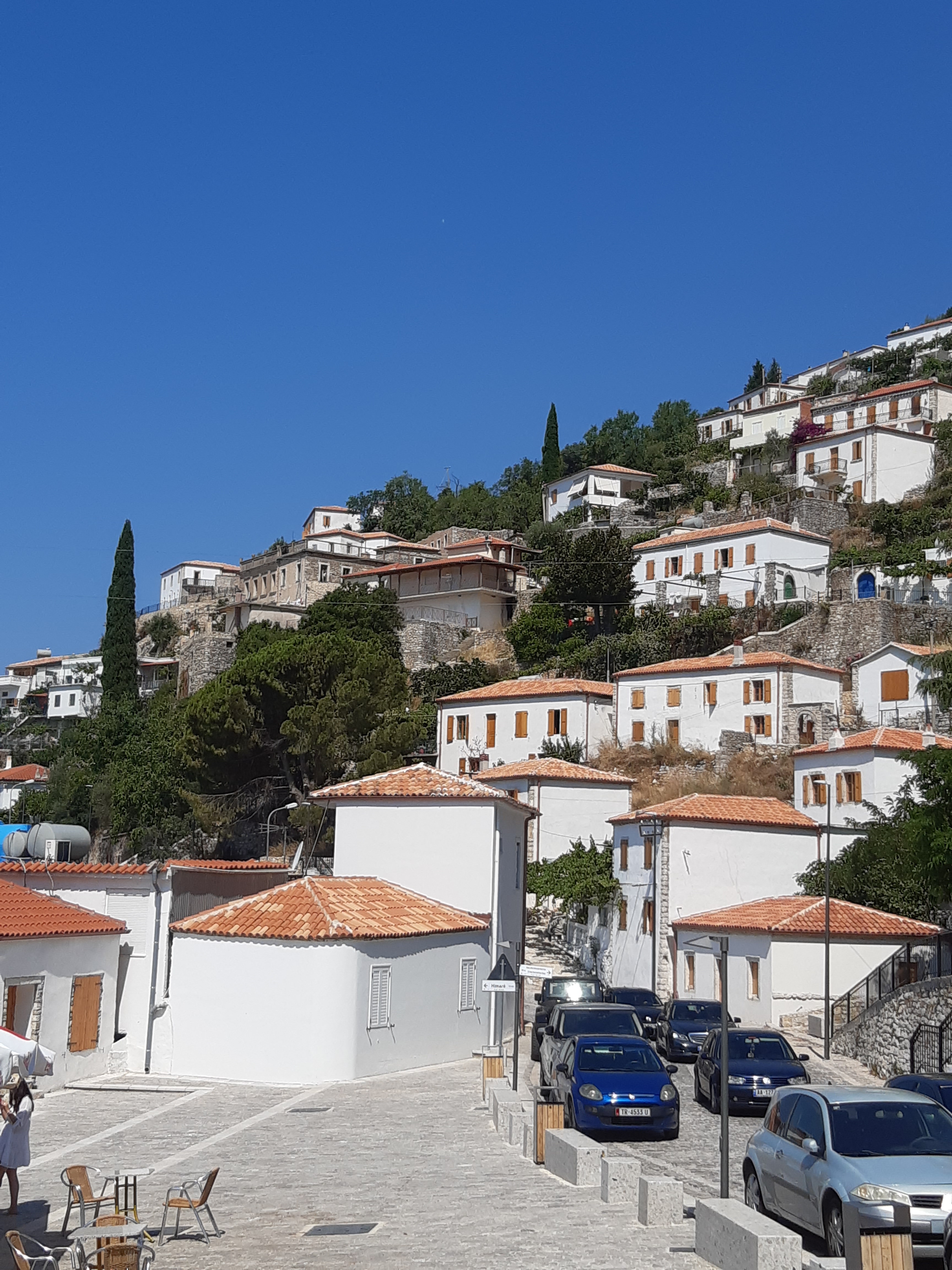Vuno is located along the road between the municipal center of Himara and the village of Ilias and lies among mountains, at the foot of the mountain Mjegullosh, 660 m high on both sides of the national road 337 m above the sea level. Its old name was Vunae. The village's name derives from the Greek word Vouno, meaning "mountain". A peculiarity of Vunoi is the special way and the high quality of construction of houses (mostly 2-3 floors totally built of stones) and paths that create the first impression and contact with the village. Its houses are situated on rocky terraces forming arched landscape and some of them were more like palaces in Italian provinces. Jail beach (a wonderful and exotic beach) with ruins of an old harbor lies in the last part of the plain of Vunoi on the lonian coast. The monastery of Skutara 564 m above the sea level is located in the south of Vunoi, on the Skutara mountain slope. The village had 21 churches and monasteries. Vuno is the village where Lord Byron and other famous writer Edward Lear stoped for a while to enjoy the architecture and church murals during their travels across Albania. The total number of Vuno inhabitants is really a small number only around 40 families live in the village year-round. Attractions of the village include the mini canyons of Vuno located between the villages of Vuno and Ilias, on the left of Gjipe stream and the road linking these two villages; St. Spiridon Monastery positioned in the center of the village of Vuno; Church of St. Mary of Mesodhia positioned on a shore in the southeast of Vuno and Jali beach.
Old Village Vuno
Back Old Village Vuno

